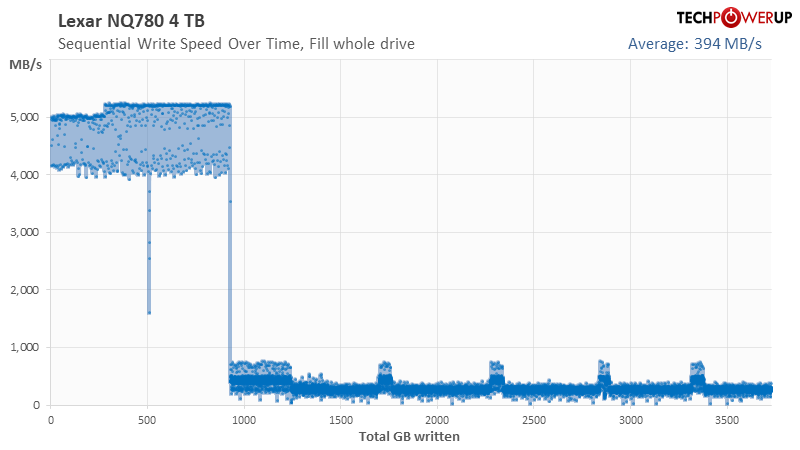- Joined
- May 14, 2004
- Messages
- 28,985 (3.75/day)
| Processor | Ryzen 7 5700X |
|---|---|
| Memory | 48 GB |
| Video Card(s) | RTX 4080 |
| Storage | 2x HDD RAID 1, 3x M.2 NVMe |
| Display(s) | 30" 2560x1600 + 19" 1280x1024 |
| Software | Windows 10 64-bit |
The Lexar NQ780 4 TB offers plenty of storage for all your games and videos. It is also priced very reasonably, at just $240, which means one TB of storage will cost you $60. Results from our testing show that performance is pretty good, too, as long as you don't exhaust the SLC cache.
Show full review
Show full review





